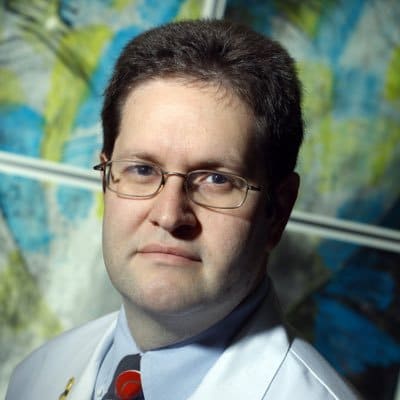A new study coordinated by the Coalition for National Trauma Research (CNTR) will implement a venous thromboembolism (VTE) prevention bundle at 10 trauma centers in the U.S. The proven intervention consists of a web-based nurse education module and a patient-centered education package. Leaders of the study hope it will demonstrate the feasibility of rolling the bundle out to hundreds of trauma centers across the U.S.
The name of the study is Implementing Best-Practice, Patient-Centered Venous Thromboembolism (VTE) Prevention in Trauma Centers. It is being funded by the Patient-Centered Outcomes Research Institute (PCORI).

“Our group has been studying VTE for 15 years, and for the past five or six years we have been focusing on the issue of hospitalized patients who are prescribed medications to prevent blood clots but are missing some of their doses,” said Elliott Haut, MD, PhD, FACS, principal investigator.
“Most recently we have shown that we can intervene by educating nurses and patients,” Dr. Haut said. “Through this education intervention alone, we have been able to drop these missed doses by about half.”
The original study validating the intervention was conducted at the Johns Hopkins Hospital and a few affiliated community hospitals. It covered a broad population of patients in medicine, surgery, oncology and other departments. The new implementation study will focus exclusively on trauma patients.
“We have collaborated with ten trauma centers across the country to implement this bundle for a wide range of patients,” Dr. Haut said. “We have shown that this works locally, and now we are going to try to scale it and do the same exact thing for a larger population, targeting trauma patients specifically.”
Participating trauma centers include the University of Maryland, Oregon Health & Science University, the Medical College of Wisconsin (Froedtert Hospital), Stanford University (Stanford Health Care), the University of California San Diego, the University of California San Francisco (Zuckerberg San Francisco General Hospital), the University of Utah, the Medical University of South Carolina and Penn Medicine (Lancaster General Hospital).
Validated VTE prevention bundle
The VTE prevention bundle consists of an interactive online nurse education module and a patient-centered education package.
The nurse education module consists of a single 30-minute interactive program that focuses on the bedside nurse’s role in preventing VTE. It provides an overview of pharmacologic and mechanical prophylaxis and information on how to educate patients on the importance of VTE prevention. It also teaches nurses how to talk to patients about missed and refused doses.
The patient education bundle includes an educational video on the risks of blood clot and the importance of complying with VTE prophylaxis medication:
The bundle also includes a patient education handout, which is available here in English and 12 other languages.
The design and contents of the handout are based on a research study of patient preferences for receiving education on VTE prevention.
“We are pushing these materials out there for free right now,” Dr. Haut said. “If people want to use them in their patient education — great, please do. That’s why we make them available for free on our website. But the logistics of how you do this as an organized intervention in your trauma center — it takes a little bit of time and energy to figure that out. That’s what we are in the process of doing now.”
Plans to scale nationwide
Leaders of the VTE implementation study estimate that more than 3,000 nurses will complete the web-based learning module. In addition, more than 30,000 trauma patients will be eligible to receive the patient-centered education.
As part of the implementation study, each participating trauma center will build an electronic alert into its electronic health record (EHR) system. A team from Johns Hopkins will also train physicians and nurses at each site to act as project champions.
According to Dr. Haut, one of the aims of the study is to identify obstacles to implementation. Project leaders will then be able to tailor the intervention for different healthcare settings. The analysis plan includes both a web-based survey of frontline nurses and structured interviews with physicians, nurses and IT professionals.
If the initial implementation is successful, study leaders plan to scale the intervention nationwide.
“Our idea is first to show that this works in ten trauma centers,” Dr. Haut said. “Then if it works the way we think it will, we plan to work with the American College of Surgeons Committee on Trauma to put it out as a standardized approach that all trauma centers could use.”

